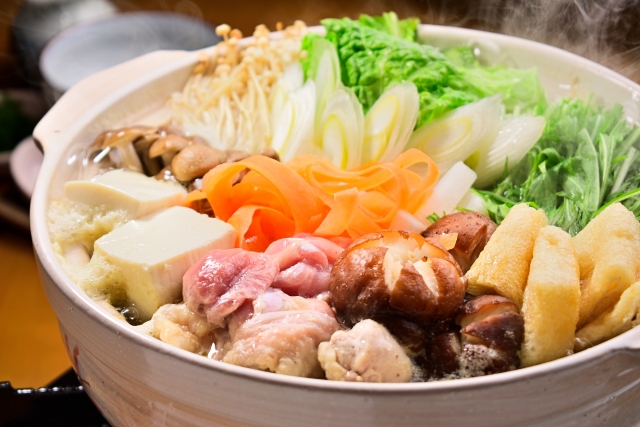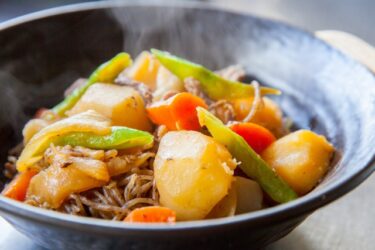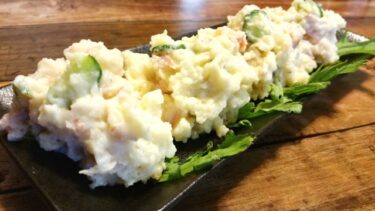Both are hot pot dishes that represent Japan. Hot pot dishes are that ingredients such as meat, seafood, vegetables, and mushrooms are cooked together in one pot on the table, and shared with everyone.
Mizutaki is made by cooking ingredients in a soup stock containing kelp or chicken, and then the cooked ingredients are eaten by dipping in a seasoning called Ponzu.
On the other hand, Yosenabe is the dish that the ingredients are simmered in the soup that have been seasoned with soy sauce, cooking sake, mirin, dashi, etc., and we eat the cooked ingredients with the soup.
What are Mizutaki & Yosenabe and are they okay for me to eat them?
Materials of Mizutaki & Yosenabe
Ingredients meat, seafood, vegetables, mushrooms, tofu, shirataki noodle, and rice
Soup soy sauce, sake, mirin, dashi, chicken
Please check at meal descriptions, too.
| Low-gluten | Low FODMAPs | |||
| Restaurant |
Mizutaki & Yosenabe, gently-seasoned hot pot dishes
There are many kinds of hot pot dishes in Japan. Nabe-ryori (hot pot dishes) are dishes in which ingredients such as meat, seafood, vegetables, and mushrooms are cooked in a pot on the table and shared by everyone.
Typical Nabe-ryori are sukiyaki, shabu-shabu, mizutaki, yosenabe, and motsunabe. Mizutaki and yosenabe introduced here are the gently-seasoned hot pot dishes.
Mizutaki ingredients and how to eat
In Mizutaki, the ingredients are cooked without using seasonings such as soy sauce, salt, and mirin in order to make the best use of the taste of the ingredients.
The name Mizutaki means “water” and “boil”. Instead of just water, kelp soup or chicken soup are used . By adding ingredients such as meat, fish, vegetables, and mushrooms to the boiling soup and simmering, the ingredients bring out the flavor and make the soup even more delicious.

The most commonly used ingredients are as follows:
- Chicken meat. Chicken thigh cut into bite-sized pieces is usually used. Beef and pork are rarely used.
- Cod. It is a white fish and it’s fillets are often used.
- Vegetables: Chinese cabbage, green onions, carrots, garland chrysanthemum, etc.
- Mushrooms: Shiitake mushrooms, enoki mushrooms, shimeji mushrooms, etc.
- Others: Tofu, Kuzukiri (potato starch noodle)
When the ingredients are cooked, take your favorite ingredients from the pot and dip them in a seasoning called ponzu in your small bowl. Ponzu is a seasoning made by adding soy sauce and dashi to citrus juice, and in some cases, vinegar and mirin are added. The citrus fruits used in ponzu are unique to Japan, and Yuzu, Sudachi, and Kabosu are often used. Lemon is not used.

We often put the additional ingredients to the pot while we are eating. Therefore, cooked ingredients and uncooked ingredients coexist in the pot. Be careful not to eat anything that has not been cooked.
When we have finished eating, boiled rice, beaten egg, soy sauce, and green onions are added to the pot to be cooking in the remaining soup. Zousui, a type of Japanese risotto are made and eaten. The umami of the ingredients exudes into the soup, so it is very delicious. In some cases, udon is put in place of rice and eaten. This is called “Shime”, means closing.
Yosenabe ingredients and how to eat
Yosenabe is different from Mizutaki in that the soup used to simmer the ingredients is pre-seasoned and the ingredients pick up from the pot are eaten without adding anything.
The soup in the Yosenabe contains soy sauce, cooking sake, mirin, and dashi stock. Add ingredients such as meat, fish, vegetables, and mushrooms to the soup and simmer. The ingredients used in Yosenabe are slightly different from those used in Mizutaki.
Yosenabe has a seasoned soup stock, so I think there is a lot of freedom in the ingredients. In Mizutaki, it is rare to add meat and fish with different tastes at the same time, but in Yosenabe, we sometimes use meat and fish simultaneously.
- Meats: Chicken, pork and meat balls of those meats
- Seafoods: Fillets of cod or salmon, fish balls of sardines, and shrimp.
- Vegetables: Chinese cabbage, green onions, carrots, garland chrysanthemum, etc.
- Mushrooms: Shiitake mushrooms, enoki mushrooms, shimeji mushrooms, etc.
- Others: Tofu, Kuzukiri (potato starch noodle), Fu (baked wheat gluten), Fried tofu, etc.
When the ingredients are cooked, take your favorite ingredients from the pot into your own small bowl and eat it. At this time, also add the soup from the pot. It is delicious to eat as it is, but it may be sprinkled with shichimi pepper. Unlike mizutaki, it does not use Ponzu.
We often put the additional ingredients to the pot while we are eating. Therefore, cooked ingredients and uncooked ingredients coexist in the pot. Be careful not to eat anything that has not been cooked.
After eating all the food, rice, beaten eggs and green onions may be put in a pot to make Zousui, but in the case of Yosenabe, udon noodle is often added at the end, and eaten.
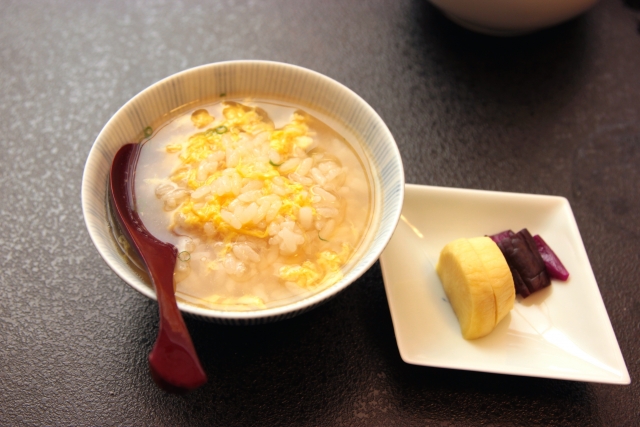
Try to eat Mizutaki or Yosenabe!
How much ?
$ 15~35
Where can I eat Mizutaki or Yosenabe?
Nabe-ryori specialty restaurant
Precautions when eating Mizutaki or Yosenabe
For gluten-free people with celiac disease
Mizutaki is gluten-free at the cooking stage, but Ponzu used when eating is not gluten-free. Soy sauce is used as a raw material for Ponzu. The protein in soy sauce is broken down during the brewing process and does not remain in the product. If you really care about it, you can buy gluten-free Ponzu at a food supermarket in advance and bring it in so that you can eat Mizutaki without worrying about trace amounts of gluten.
Soy sauce is used in the soup in Yosenabe. The amount of gluten is small, but do not eat if you are concerned. In rare cases, Fu is used as an ingredient in Yosenabe. Fu is baked wheat gluten, so be careful not to put it in the pot.
For gluten-free people other than celiac disease
Soy sauce and Fu are the only ingredients derived from gluten-containing grains used in mizutaki and yosenabe. Since the protein of soy sauce is decomposed during the brewing process, almost no gluten remains. However, Fu which are sometimes used as an ingredient in Yosenabe is a baked wheat gluten, so please do not put it in the pot.
For Muslims
Mizutaki does not use problematic ingredients. Please note that Yosenabe may use pork or meatballs made from pork.
Japanese writer’s comment for Mizutaki & Yosenabe
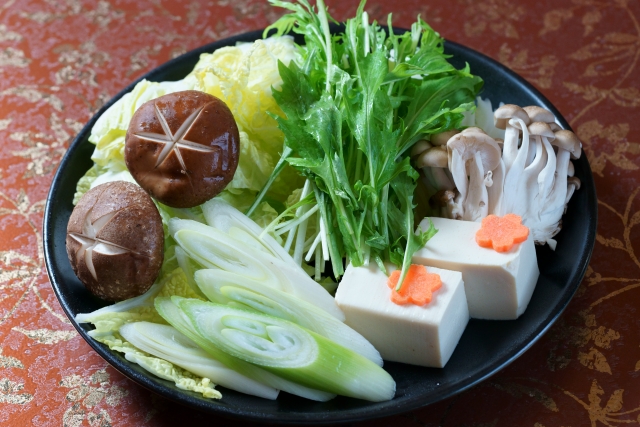
Ingredients and cooking methods for hot pots vary from region to region.
Mizutaki in the Kyushu region uses chicken soup, while Mizutaki in the Kansai region uses kelp soup stock.
Let’s introduce how to make kelp soup stock from dried kelp. Just add 10g of dried kelp to 1L of water and leave it for 3 to 12 hours. If you are in a hurry, soak in water for 40 minutes, heat on low heat, and extinguish the fire before boiling. In either case, remove the kelp. The kelp soup stock is transparent and has an elegant taste. It is used not only for Mizutaki but also for various Japanese dishes.

